Stratocaster vs Telecaster: how to choose between Fender's iconic electric guitars
Fender's Strat and Tele changed the world. But which one will be your next electric guitar? We can help with that...
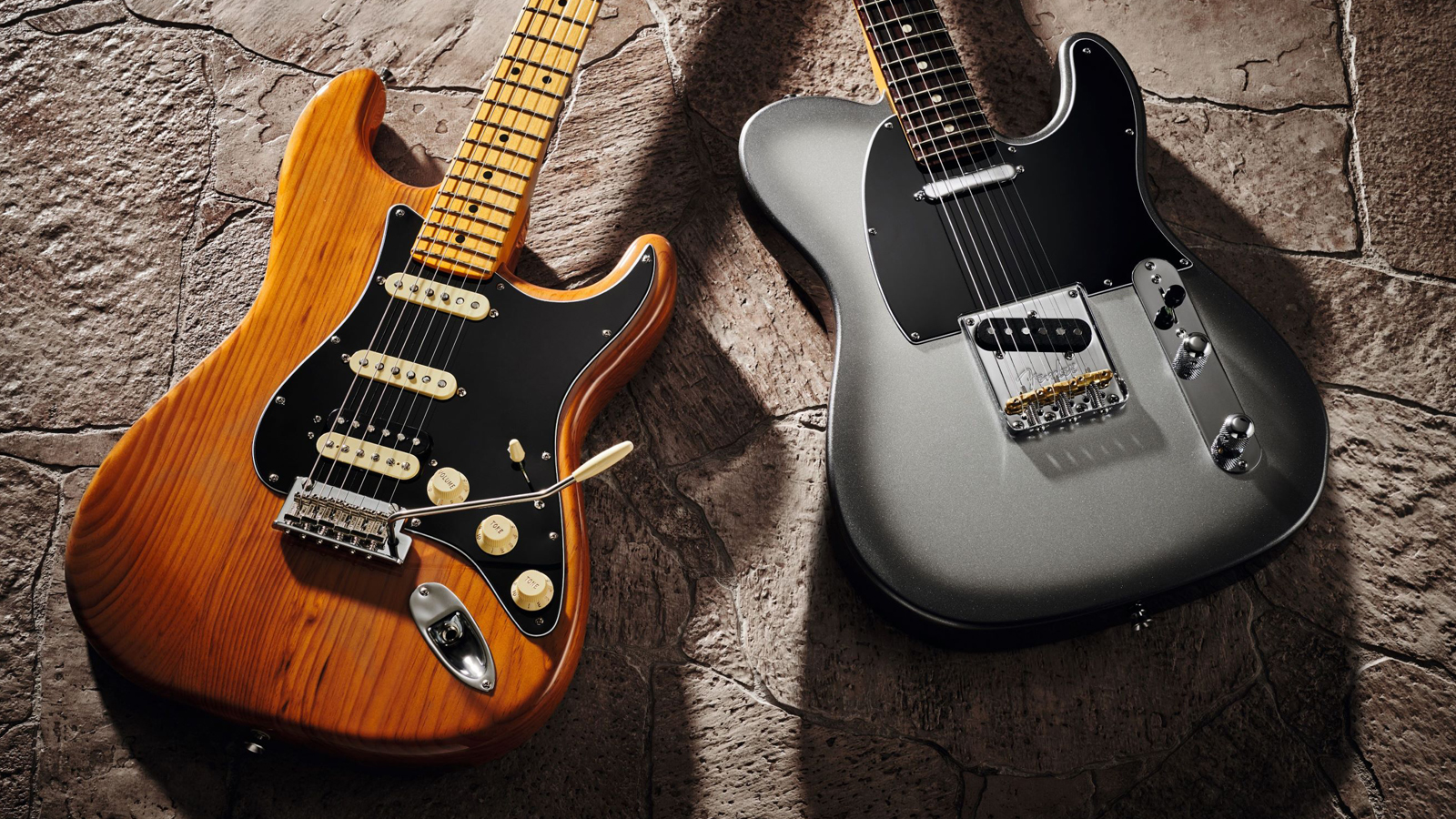
Leo Fender was a genius. Most folk would be content with changing the world with the Telecaster, the first commercially available solid body electric. Yet, lightning struck again in 1954 when Leo unleashed the Stratocaster, arguably the most famous electric guitar of all time. And the prettiest. The Stratocaster vs Telecaster debate has raged on ever since.
But which guitar is the right one for you? Well, allow us to talk you through the differences between these iconic planks. If you think they sound the same, you're wrong. They probably feel the same to play? Try again. Let's try to settle the Strat vs Tele debate once and for all. No, not which one is the best. Which one is best for you.
Stratocaster vs Telecaster: History
Leo Fender and his team in Fullerton, California, began work on the guitar that would become the Telecaster back in 1949. By the following year, a single pickup version called the Esquire was launched. Soon after the two-pup Broadcaster was revealed. After a dispute with Gretsch, Fender rechristened its new guitar the Telecaster in 1952 and it's been in production ever since.
The Stratocaster was born in 1954. Fender's customers loved the Tele but requested some spec tweaks. They wanted an extra pickup, a more comfortably contoured body, and a vibrato unit. Rather than mercilessly tweak the Tele, Leo's team decided to create a new model. The Stratocaster was born and like its older brother has never been out of production.
Stratocaster vs Telecaster: Players

Although often considered as the go-to soul and country guitar, the Telecaster has some true rock sensibilities. It's simple and straightforward, and ultimately a utilitarian instrument which has the potential to make some serious noise. Cut him and Rolling Stone Keith Richards will always bleed Telecaster. Bruce Springsteen loves them too. More recently, players such as Slipknot's Jim Root, the almighty Tom Morello and country king Jason Isbell have all donned a Telecaster.
Lest we forget, Jimmy Page employed a '59 Tele for his Stairway To a Heaven solo. For years, we all assumed he'd used a Les Paul.
As for the Stratocaster, it was bespectacled ‘50s rocker Buddy Holly that initially put the model on the map. Hank Marvin of The Shadows made the Strat an icon of early British rock. Surf dudes like Dick Dale got hip to the Strat in the early ‘60s before Jimi Hendrix sealed its reputation as a blues rock icon by the decade's end. These days we consider Jimi, Texas blues legend Stevie Ray Vaughan and Chic icon Nile Rodgers as the ultimate ambassadors of the Fender Stratocaster.
We've also seen the Strat in the hands of players such as Yngwie Malmsteen, John Mayer, John Frusciante, Tash Sultana and Cory Wong - proving that the Stratocaster is versatile enough to satisfy even the most demanding needs of players, from legends to modern innovators.
Stratocaster vs Telecaster: Tones
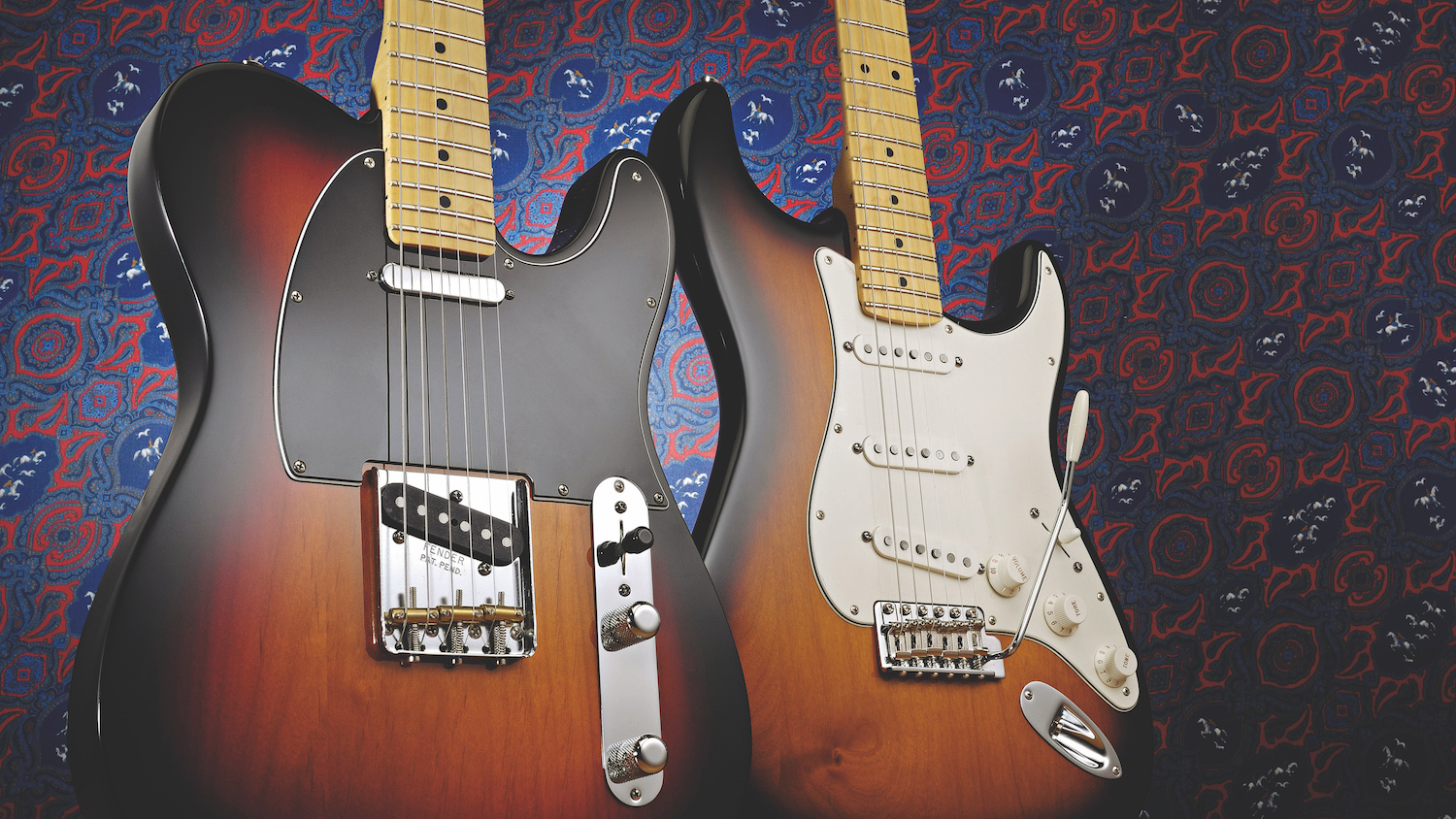
They might have come off the same drawing board but the Tele and Strat have very distinct tonal palettes. Telecasters are sonic chameleons. This is the guitar that links country jazz players like Danny Gatton to classic rocker Pete Townshend of The Who and Slipknot's masks metalhead Jim Root. Telecaster pickups can mimic a big-bodied jazz guitar, a country pedal steel, and a Les Paul
A great Stratocaster will pump out what guitar connoisseurs describe as "glassy" tones. Strat pickups should sound warm and woody with a hint of 'plink', like flicking the rim of a wine glass with your fingernail.
Arguably the most iconic Strat tones are combinations of bridge or neck pickup with the middle pup. Listen to Jimi Hendrix playing Little Wing for a textbook example of the neck/middle pups in cahoots.
Stratocaster vs Telecaster: Key Spec
While there have been many exceptions over the years, the classic Tele and Strat share a few family traits. The two biggest: bolt-on maple necks and single coil pickups.
Models with translucent finishes will generally have an ash body as it has a prettier grain pattern. Solid colours usually conceal an alder, poplar and basswood carcass.
Up to 1957 all Fenders had a maple fingerboard. Rosewood has been an option ever since, on Japanese and American Fender models. Mexican made Fenders now feature Pau Ferro fingerboards to give the increasingly endangered rosewood a much needed rest.
Oh, and don't assume that you need to buy a Strat just because you need a vibrato. For example, the Mexico-built Fender Vintera 60s Telecaster comes with a Bigsby vibrato. Better still, it looks seriously cool.
Stratocaster vs Telecaster: Buying advice
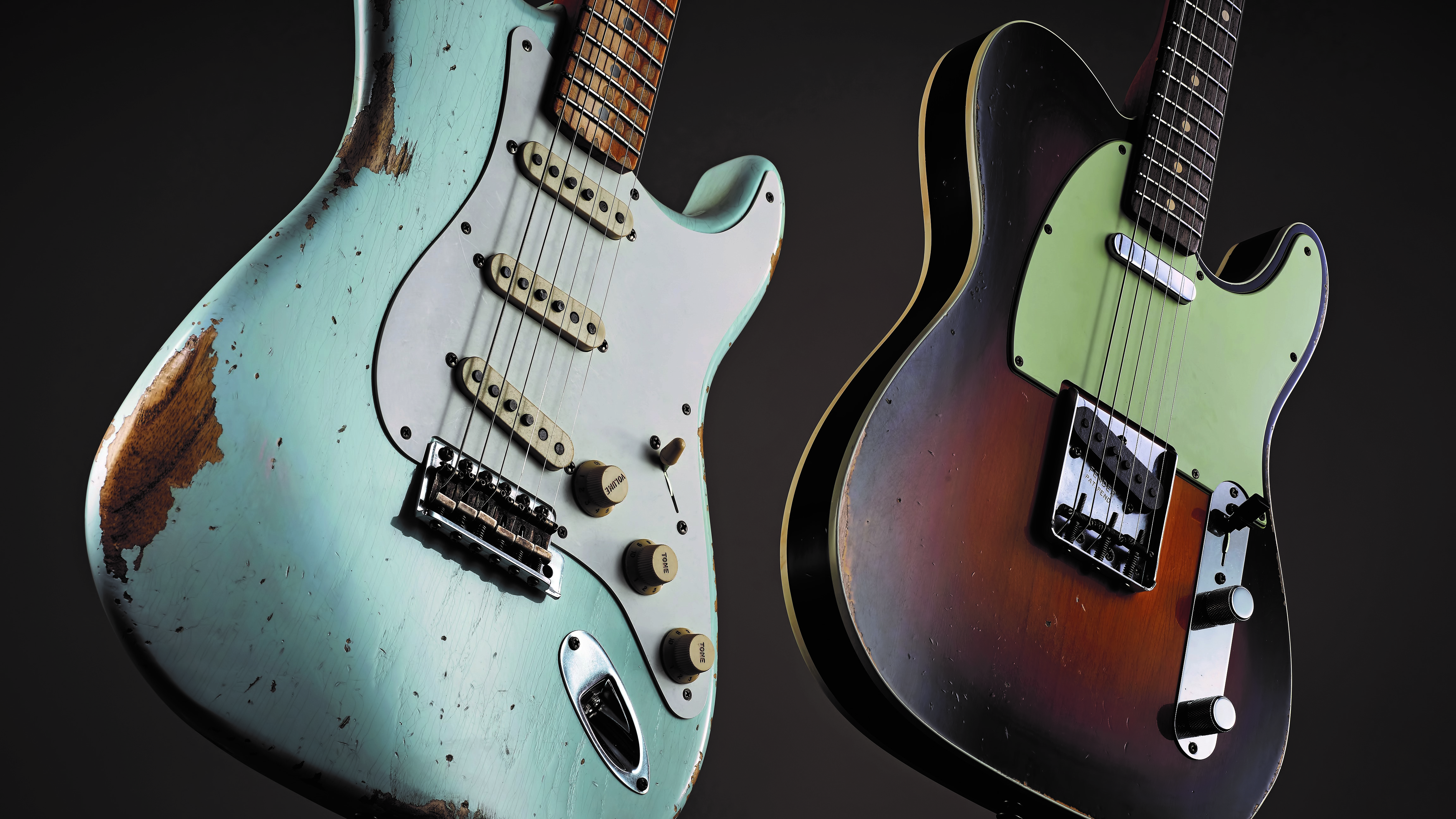
Fender's Stratocasters and Telecasters have had the best part of 70 years of tweaking and tinkering in order to make them the best they can be. The seemingly endless amounts of upgrades and updates to these guitars means that there are many different models on offer at different price points, and with vastly different specs.
For this reason, it's worth you taking a few things into account; what styles you play, how you play the guitar, and what sound you're after - to name a few.
If you're a country player, then the Tele would be your obvious choice. That famous 'twang' is almost essential if you're going down that musical route. That's not all the Tele can do, however. Pair it with a dirty amp or overdrive pedal, and you'll coax all of that resonance and bite out of your guitar - and trust us, it's a pretty addictive tone.
If you're after an ergonomically-shaped guitar with a little more versatility, then the Strat would be the one to go for. Three pickups and five selector switch positions on the Strat trumps the Tele's slightly more primitive electronics in terms of available sounds, and the Strat's tummy and forearm cutaways will likely make your playing experience a little more comfortable - especially if your playing style is quite laid back.
The Stratocaster, like the Tele, is capable of most musical styles when paired with the right guitar amp or pedals - but if your ideal tone is smooth and rounded with a little bit of shimmery top-end, then the Strat is your friend.
We have to concede that all of the neck profiles on offer within the Strat and Tele catalogues are comfortable and fairly easy to play - but if you're a fan of a thinner neck, we'd recommend anything with a '60s spec. The '50s neck profile tends to be pretty chunky, which can create a stumbling block for some newer or smaller players.
Recommended Stratocasters
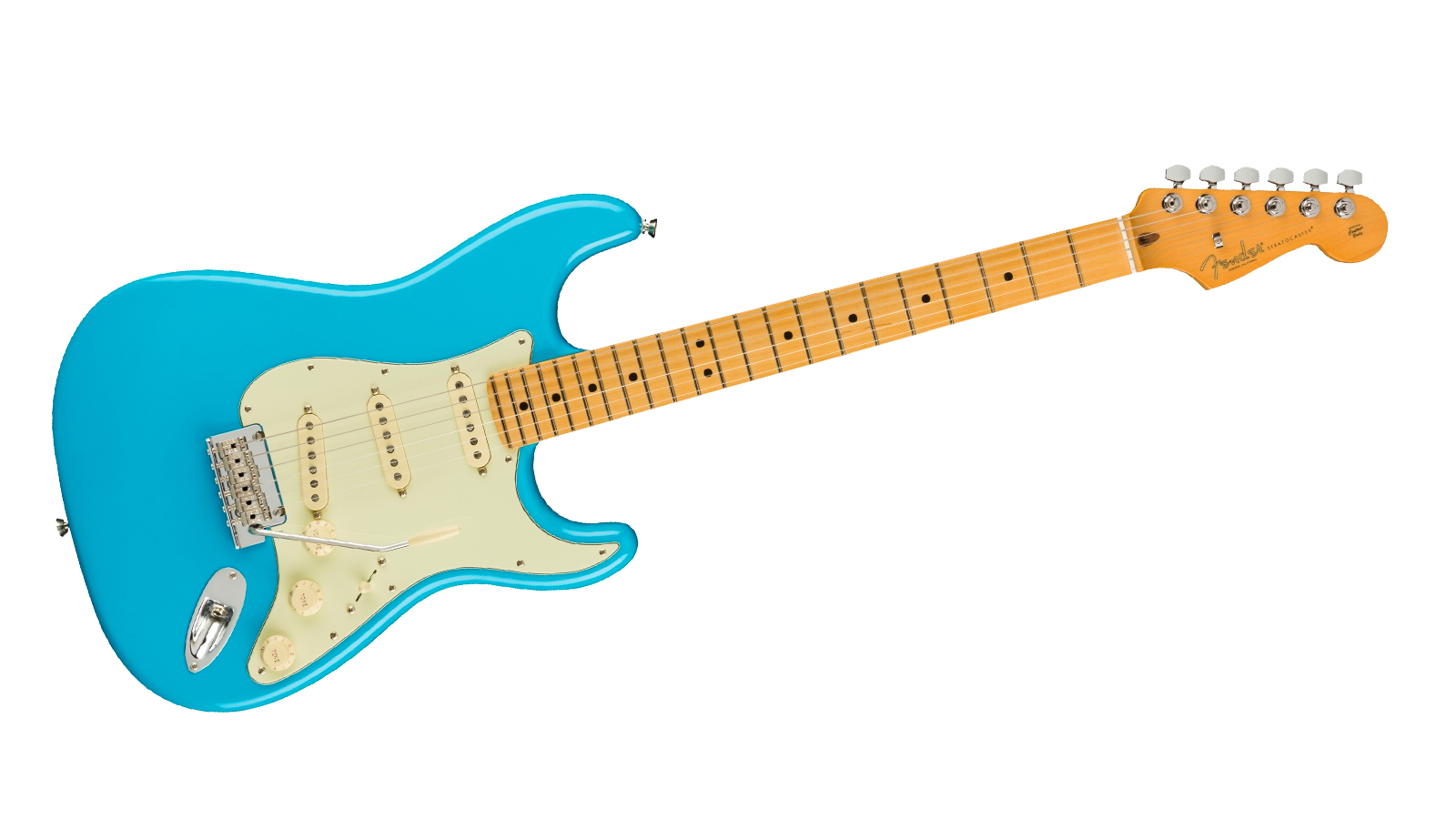
Specifications
Reasons to buy
Reasons to avoid
If you've got the budget to spend, then we'd recommend you look no further than the American Professional II Stratocaster. Saying that it's the best is bold, we know - but in our opinion, you'd have to spend a lot more to find a guitar worth upgrading to. The features this guitar possesses mean that this Strat has a seriously wide tonal palette - and this versatility is what made (and still makes) the Strat such a fan favourite.
With a "Deep C" profile neck finished in Fender's own "Super-Natural" satin, the playing experience is slick, comfortable and effortless. The fingerboard edges are rolled to enable that Mayer-esque thumb-over-the-top playing to happen easily, and the Narrow Tall frets are a nice classic touch. The Pro II is arguably the perfect modern Strat.
Read the full Fender American Professional II Stratocaster review

2. Fender Vintera ‘60s Stratocaster
Our expert review:
Specifications
Reasons to buy
Reasons to avoid
The brilliant thing about the Vintera Series, aside from the ace build quality and sensible price tags, are the spec options. You can have this ‘60s inspired Strat in vintage correct (£749/$910) or 'Modified' versions (£849/$1,030).
Vintage buffs will go a bundle on the old school 7.25" fingerboard radius, thin frets, and classic six-screw 'Synchronized' vibrato of the original spec Strat.
Those of you looking for cool Strat looks combined with more modern performance will likely prefer the Modified edition. You get a flatter 9.5" radius for easier string bending, hotter output single coil pickups, and a smoother two-point vibrato. It's everything a modern Strat should be.
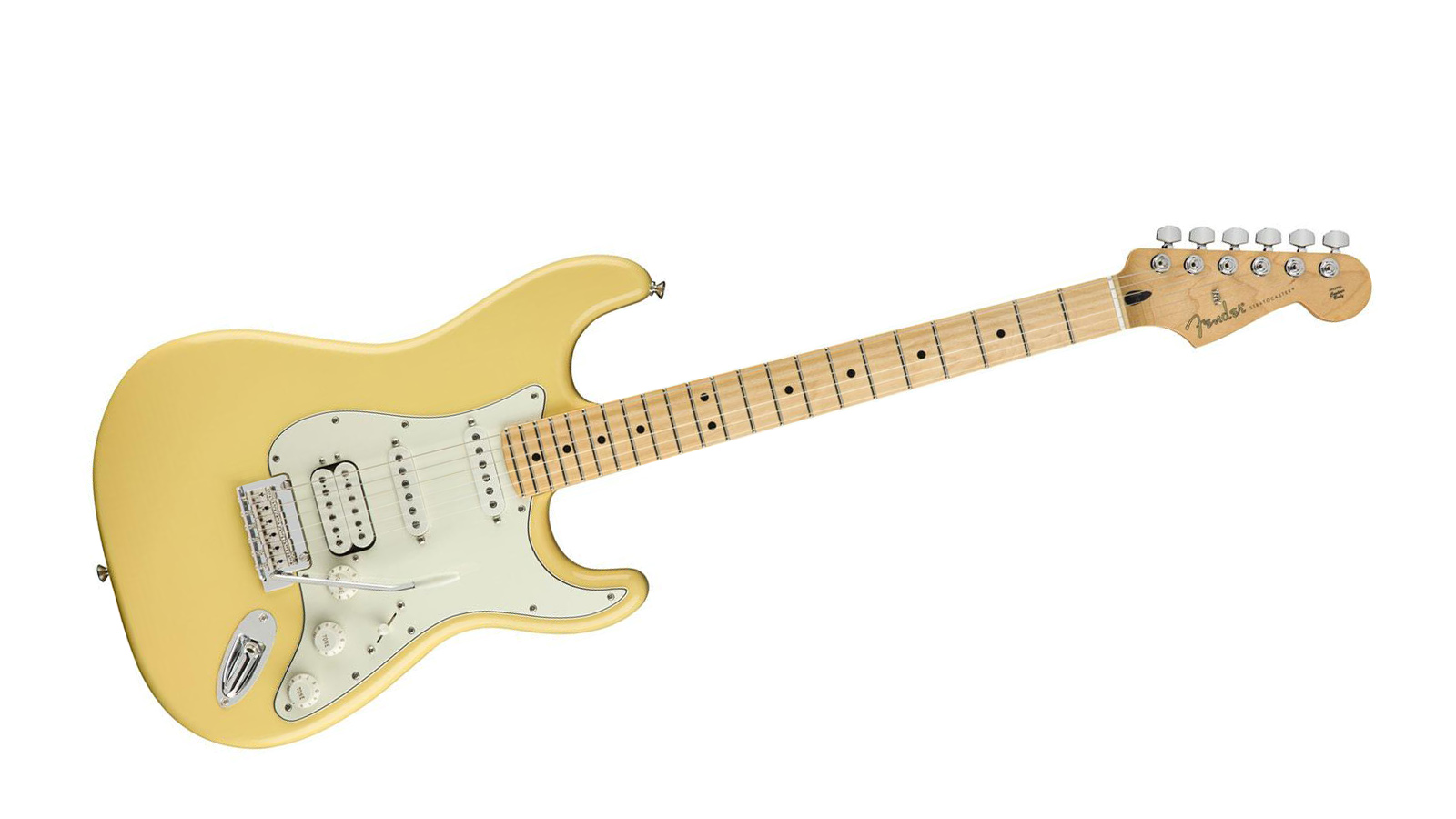
Specifications
Reasons to buy
Reasons to avoid
While the new Vintera Series Strats and Teles are the bee's patellas, they still cost the business end of a grand. Like its Tele-shaped brethren, the Player Strat offers killer old school looks and modern playability in a more affordable package.
The list of finish options is impressive but the real gravy is in the super comfortable neck shape and chunky frets. Figure in some fantastic sounding single coils and this thing is irresistible.
For the ultimate comparison, try this and the Tele version. Then you'll know whether you're a Strat fan, Tele nut, or one of those people that loves both of Leo Fender's mechanical wonders.
Read the full Fender Player Stratocaster review
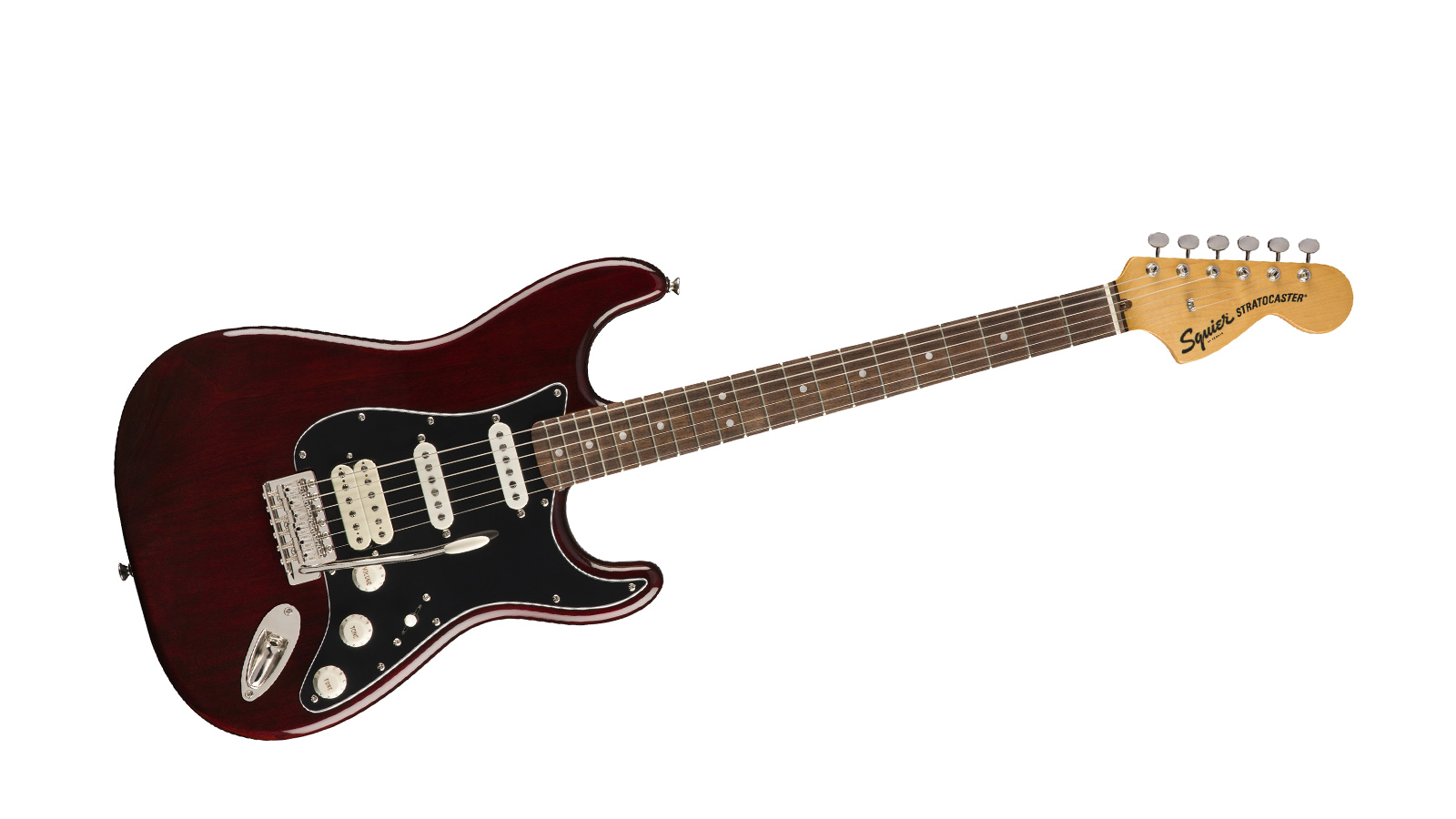
4. Squier Classic Vibe ‘70s Stratocaster HSS
Our expert review:
Specifications
Reasons to buy
Reasons to avoid
Some people think the Strat bridge pickup is a bit of a weed. If that's you, consider a Strat in a HSS (humbucker/single/single) format. Taking its cue from the groundbreaking guitar tweaking of Edward Van Halen, the immensely affordable Squier Classic Vibe ‘70s Strat features a fat-sounding 'bucker in the bridge position.
Given that it's a ‘70s throwback, this guitar features the big version of the iconic Strat headstock. Playability is enhanced by a modern 9.5" radius fingerboard and some hubby frets.
You can have this guitar with a brighter sounding maple 'board, or one made from the warmer sounding Indian Laurel.
Recommended Telecasters
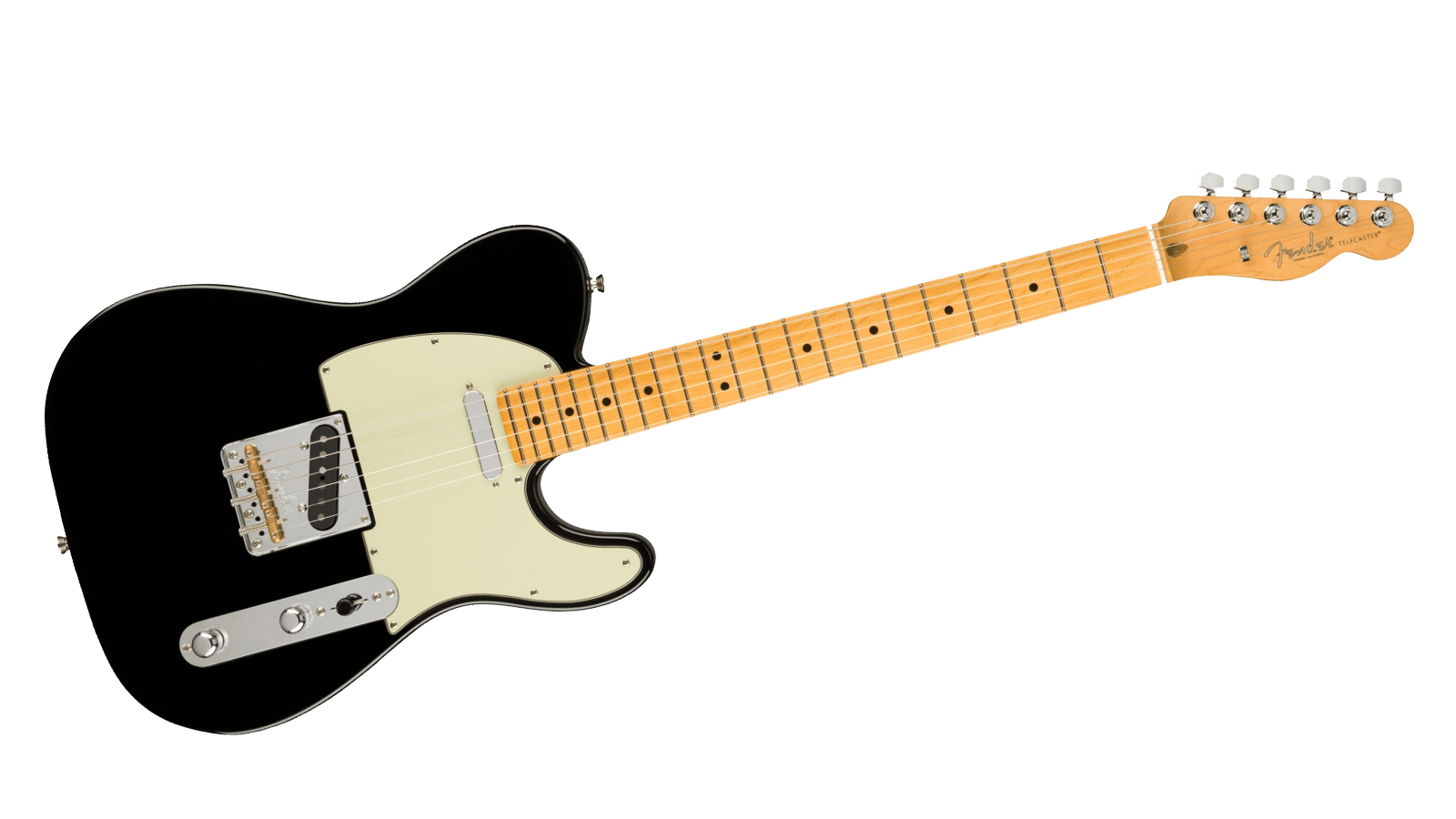
Specifications
Reasons to buy
Reasons to avoid
The American Pro II Telecaster from Fender is proof that the original solidbody electric guitar can still stay relevant over 70 years on with a few simple tweaks.
This Tele is equipped with Fender's V-Mod II pickups, which are a blend of alnico 5 and alnico 2 magnets. The neck pickup in particular is impressive, with alnico 5 under the three bass strings to give you some extra low-end grunt, and alnico 2 under the treble strings to warm up some of the treble-y high-end you can expect from a Tele. The bridge pickup is exclusively alnico 5, and creates some real power as such.
The "Deep C" neck sits in between a Modern C and U in terms of shape and coupled with the narrow tall frets offers extra hold and control. The fretboard edges are rolled exquisitely for extra comfort, and the ‘Super-Natural’ satin finish is a welcome feature too. All of these features turn the old-school Tele into a modern masterpiece.
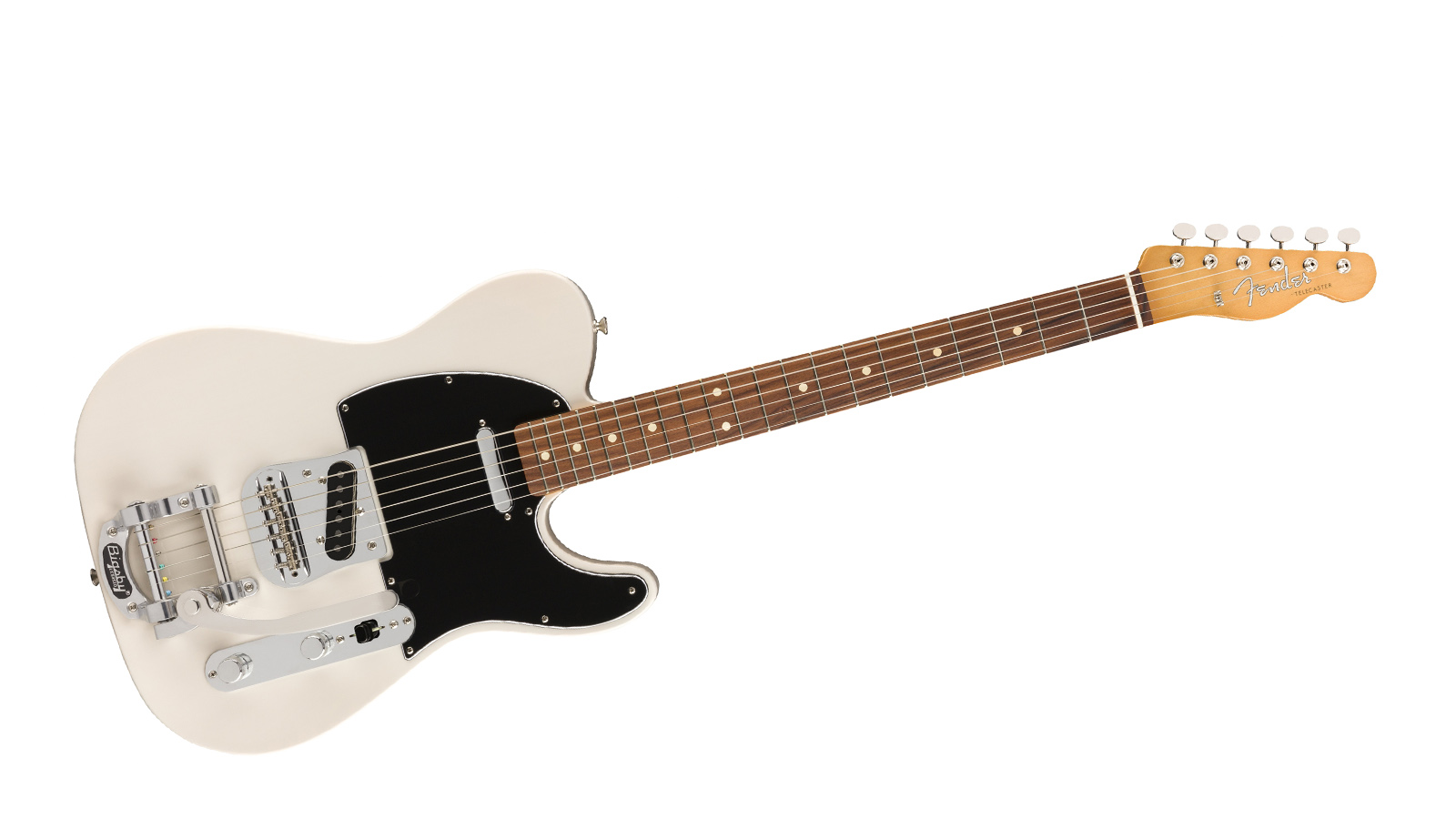
2. Fender Vintera ‘60s Telecaster w/ Bigsby
Our expert review:
Specifications
Reasons to buy
Reasons to avoid
Tele heads have been installing Bigsby vibratos on their guitars since the early 1950s. Even after Leo Fender brought out vibrato-equipped guitar, the Stratocaster, many players still prefer the Tele/Bigsby partnership.
The new slim-necked Vintera Series ‘60s Telecaster comes with a Bigsby direct from the factory. You have to admit the Bigsby looks great in this thing. It's like a hood ornament on a vintage Cadillac.
Tone-wise, you get all the aural sexiness of a classic ash-bodied Tele with the ability to wobble the vibrato to create a shimmer effect or sustain notes and chords.
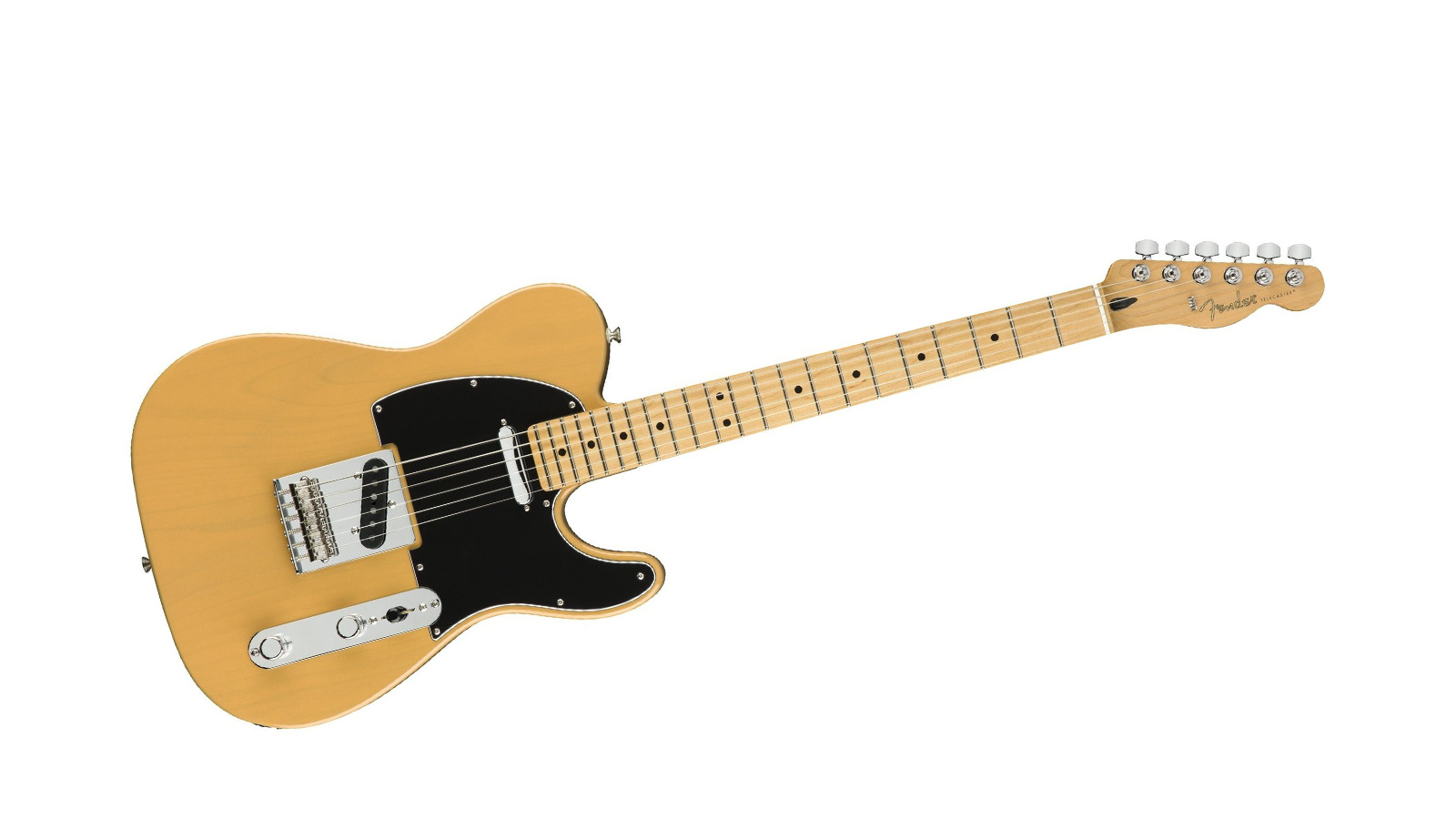
Specifications
Reasons to buy
Reasons to avoid
Built in Mexico, the Player Telecaster is a bit like a new Ford Mustang. That is, it shows off its classic DNA while offering modern performance under the hood.
The Player has a supremely welcoming C profile neck with a slippery satin finish to prevent your sticky mitts from dragging. It has 22 frets, one more than your classic Tele, and a modern 9.5" fingerboard radius for choke-free string bending above the 12th fret.
Pickups feature Alnico V magnets. In other words, they work great for purveyors of classic and hard rock. These things have more punch than Rocky Balboa.
Read the full Fender Player Telecaster review

Specifications
Reasons to buy
Reasons to avoid
A Telecaster made from pine might seem like an exercise in cost cutting. In fact, the earliest Fender models were made from the very same timber.
You do get the classic bolt-on maple neck and fingerboard here, not to mention a set of punchy-sounding single coil pickups. The latter feed off the resonance of the body wood to unlock some classic Tele country, rock and blues tones.
The message here is don't be put off by the price. This Telecaster punches above its price tag in looks and sounds. It epitomises that old American cliché. Bang for your buck.
Read the full Squier Classic Vibe ‘50s Telecaster review
Related buying guides
MusicRadar's got your back
- Play for less with the best budget electric guitars
- Les Paul vs SG: which is the right guitar for you?
- Read more: the best guitar amps under $/£500
Want all the hottest music and gear news, reviews, deals, features and more, direct to your inbox? Sign up here.